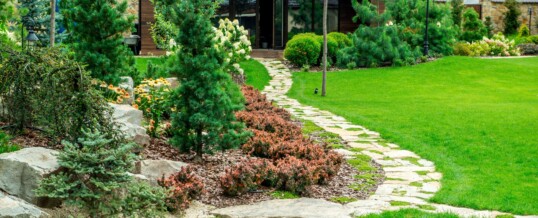
A flooded basement can cost you anywhere between $2,000 and $7,000 dollars! This is an extreme cost for an avoidable cost. With interior waterproofing, you can keep your basement dry.
As sub-floor units, basements are incredibly vulnerable to flooding. Despite your home’s age or architecture, you have groundwater. After a storm, rising groundwater levels cause water pressure from all directions to push groundwater toward your floor and basement walls.
Homeowners need to be proactive about basement waterproofing and protecting their property from rising water levels, rain, and melting snow. Many homeowners are concerned with basement flooding. Keep reading to learn how good landscaping can aid in basement waterproofing.
Gutter Maintenance
Gutters are designed to help divert water from your home and keep your home flood-free. Gutter systems are installed under the edge of your roof to capture excess water that streams down your roof.
The main cause of gutter problems is poor upkeep. Gutters that are clogged with material, including rotting twigs and leaves, cannot perform to their full potential. The obstruction prevents rainwater from flowing normally from the siding and foundation of the house.
Install Drainage Trenches
A drainage trench is a dip made at the bottom of a hill to direct water away. Create a sloped swale to direct water down and away from your home if your yard has high and low spots where it tends to collect water. This will help you avoid basement flooding and the need for water damage repair.
Before building a trench, we will check with your local and state authorities to be sure that channeling rainwater is permitted in your area before you make any plans to build a swale in your yard. It’s time to plan your sale if you’ve gotten their approval.
Your yard and trench need to be at different elevations. This will let you redirect water towards a sewer or local waterway. Trenches will help you move the water away from your house and into a lower place where it won’t be harmed by occasionally excessive groundwater.
Once you have laid out a path for your swale, you need to remove the grass or sod in the area. You will then dig a trench and replace the sod alongside the trench. This will give you a functional landscape that will deter basement leaks.
Building a Rain Garden
You might instead build a space inside your yard to use that extra water by creating a rain garden. If you don’t have a place to divert rainwater off your land or don’t want to create a spot for standing water on your property.
A rain garden is a specially designated portion of the yard that has a lower elevation than the rest of it and is filled with plants that thrive in water. You may achieve the same result as a swale and also create a stunning focal point in your yard by diverting water away from the home and toward plants that benefit from continual moisture.
Once you pick a location to build your rain garden, you should build something to facilitate the transit of water from your home to the rain garden. You should fill the garden basin with a mix of sand, topsoil, and organic matter for the best drainage. Plants such as sedum, daylilies, and lavender thrive in these moderate moisture areas.
Leverage Mulch in Your Design
Mulch is used by homeowners to give their yards a polished appearance and to fight weeds. To achieve a uniform appearance, many homeowners, however, make the error of mulching right up against their property. Mulch retains water, so after heavy rain, water may accumulate along the side of your home.
If you want to add mulch to your home, you need to leave about a one-foot space between your home and mulch. Wind and rain may move around some of the mulch, but keeping this space is essential to fighting off floods.
Using mulch can help prevent basement floods by fighting off moisture and keeping termite populations from flourishing. You need to be careful about using mulch for your landscaping, though. If your home has aluminum siding, too much mulch next to it can cause rusting.
Pick Permeable Pavement
A porous urban surface known as permeable pavement collects rainwater and surface runoff. Permeable pavements will store the excess water in a reservoir, and then gradually allow it to seep into the soil below, keeping your subfloor basement protected.
Porous paver tiles make up permeable paving systems, which enable water to permeate the pavement and drain into the earth. Water can pool close to your home as a result of asphalt driveways, concrete patios, or patios made with closely spaced pavers, which can eventually result in a flooded basement.
However, installing paving stones in your yard is not enough to maintain these systems. For them to work correctly, a bed of crushed stone must be laid.
Utilize Good Landscaping to Keep Water Out of Your Basement
No one wants to deal with the repercussions of a flooded basement. At Armored Basement Waterproofing, our team is eager to guide you through the process of waterproofing your basement. After a thorough inspection, we can make adjustments that will ensure you have a dry basement.
Start utilizing good landscaping to keep water out of your basement. If that doe snot work, Contact us for a free inspection for your leaking basement.
ShareMAR
